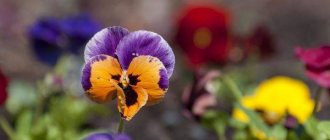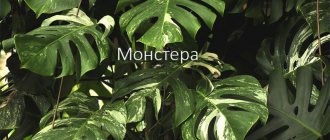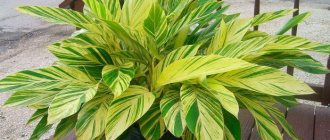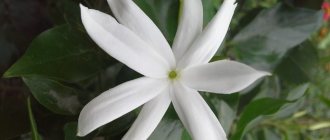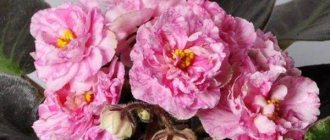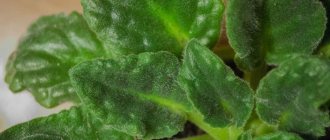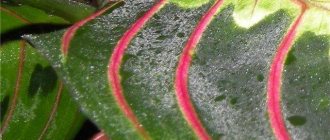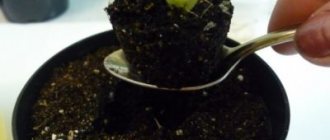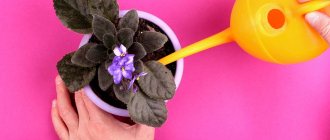This plant is very often found in flower beds, various areas and local areas. The flowers are characterized by the presence of three shades. Among flower growers, there is a second name for the plant that is used most often - Pansy. However, in botany this plant is called tricolor violet. There are annual varieties and biennial varieties of tricolor violet. This plant is unpretentious in care, and in the wild it can grow like a weed over large areas.
Thanks to the fruitful work of breeders, it was possible to develop a variety with large flower sizes. Later, this plant began to be grown for decorative purposes, and it also has medicinal properties. Tricolor violet is often used as an anti-inflammatory, bronchodilator, and antimicrobial.
What it looks like and where it grows
The tricolor violet, or pansy, is a plant from the Violet family with an annual or biennial life cycle. It has a taproot, branched faceted stem, oval or ovoid green basal leaves.
From April until the end of summer it bears single flowers consisting of five petals, one pistil and five stamens. The upper petals are larger and are usually purple or dark blue. The middle ones are slightly smaller, yellow-white in color. There is a light spur on the lower petal. Closer to autumn, the plant bears fruits, oblong-shaped seed pods.
Tricolor violet rises up to 30 cm above the ground
The tricolor violet is widespread throughout the Northern Hemisphere. You can meet it in Western Europe, Sweden, on the territory of Russia - in the European part, in the Far East, in Crimea and Siberia. The flower chooses meadows, pastures, forest edges and old parks, roadsides and wastelands to grow.
Description, reproduction and distribution area of tricolor violet
An annual or biennial plant of the violet family (Violaceae), up to 45 cm high, with several stems.
The stem is simple or branched, deciduous, recumbent, ascending or straight. Stem leaves are alternate, simple, glabrous, large-crowned, oblong-oval, basal leaves are almost heart-shaped, on long petioles. Stipules are large, leaf-shaped, pinnately divided.
The flowers are large, with a spur; parts of the corolla are variegated: the two upper petals are violet, lilac or blue, the two lateral petals are whitish-yellow, the lower one is bright yellow.
The fruit is an oblong-ovoid capsule, opening with three valves, which then deflect horizontally.
The seeds are small, obovate, smooth. One capsule can produce up to 3000 seeds. The tricolor violet blooms all summer, the fruits ripen in June. Reproduces mainly by seeds.
Tricolor violet is widespread in the European part of the CIS, Western and Eastern Siberia and Central Asia.
It grows on fresh soils in dry meadows, in fallow fields, in grain crops, along road slopes, in light coniferous and mixed forests.
Field violet (Viola arvensis Murr.) is also used for medicinal purposes, which is used in the same way as tricolor violet. In the field violet, the upper petal is usually white, less often light purple, and the rest are yellow, the corolla is equal in length to the calyx or less than it. A widespread weed of spring and winter crops and perennial grasses. Both violets are native to Europe, but as weeds they have spread throughout the globe.
The healing properties of violets were known in ancient times. In Roman mythology it is referred to as the "flower of Jupiter". One hot day, the legend says, Venus decided to take a swim. I chose a remote grotto so that no one could spy on it, and swam for a long time and with pleasure. And suddenly I heard a rustling sound. She turned and saw several mortals looking at her. The goddess was angry and decided to punish those who were too curious. She called out to Jupiter, asking for death for the guilty. Jupiter heard the request, but did not consider the guilt of mortals to be so great and turned them into flowers, on which surprise and curiosity were written, which led to their death. In Christian mythology, the tricolor violet is called the flower of the Holy Trinity. Medieval Christians saw the All-Seeing Eye in the dark triangular spot located in the center of the flower, and the radiance around it in the stains surrounding it. The three sides of the triangle were considered the three faces of the Holy Trinity, originating from the All-Seeing Eye.
Lovers especially revered the violet - this flower was for them a symbol of fidelity and love. It was considered worthy to give each other objects placed in an enlarged image of a flower. And on Valentine's Day (February 14), these flowers are sent to loved ones. It was enough to send a violet without any words, and it was tantamount to a declaration of love. This custom was especially popular in England.
Violets were the favorite flowers of the great Goethe. In honor of the poet, German gardeners developed a number of large-flowered varieties, naming them after the characters of his works: almost black was called “Doctor Faust”, bright red - “Mephistopheles”, pale blue - “Margarita”.
Chemical composition of violet tricolor
Photos, medicinal properties and contraindications of tricolor violet deserve close attention. The leaves and flowers of the plant contain many useful substances, namely:
- glycosides and alkaloids;
- tannins;
- antioxidants;
- tannins and saponins;
- polysaccharides;
- ursulic acid;
- vitamin C;
- flavonoids;
- essential oils;
- mineral salts.
Tricolor violet should be used in small dosages, since many substances in its composition are potentially toxic. However, when used carefully, it has a beneficial effect on health.
Properties of violet herb
The medicinal properties of tricolor violet are due to its rich chemical composition. In addition to expectorant and anti-inflammatory effects, when taking herbal remedies, a diuretic and choleretic effect is observed, and spasms are eliminated.
Chemical composition
Violet grass is rich in saponins, flavonoids, alkaloids, glycosides, solanine, tannin, tannins, carotenoids, polysaccharides, and essential oils. Contains salicylic acid and vitamins C, E, P. Minerals present: copper, calcium, magnesium.
- Saponins have an expectorant effect and accelerate the removal of mucus from the bronchi. They have antimicrobial and anti-inflammatory characteristics.
- Flavonoids have anti-cancer properties. These substances help remove heavy metal salts from the body. Strengthens the circulatory system. Flavonoids are natural antibiotics.
- Glycosides take part in respiratory processes and increase cardiac activity.
- Carotenoids are classified as antioxidants. They increase the body's defense response and eliminate foci of inflammatory processes.
- Essential oils have a calming effect on the nervous system. They are used as an effective antiseptic.
- Salicylic acid reduces high fever and fights pathogenic microorganisms.
- Vitamin C is considered a natural antioxidant. It boosts immunity, improves adrenal function and promotes wound healing. Vitamin E fights free radicals and is responsible for the body's production of fatty acids. Vitamin P takes part in hematopoietic processes.
Medicinal properties
Violet is famous for its medicinal properties and there are very few contraindications for its use. Flower-based remedies are used for coughs, asthma, allergies, and pathologies of the genitourinary system.
Tricolor violet helps strengthen the walls of blood vessels and reduces blood clotting. With regular use of a flower decoction, the risk of developing thrombophlebitis is reduced, and capillaries lose fragility.
Tricolor violet has the following pharmacological effects:
- disinfectant;
- provocative;
- pain reliever;
- tonic;
- expectorant;
- blood purifying;
- wound healing;
- antirheumatic;
- diuretic;
- anti-inflammatory;
- calming.
Contraindications
When treating with tricolor violet, a contraindication is considered to be too long-term use or unreasonably large doses of drugs. An overdose of violet infusion or decoction is fraught with problems with the digestive system. Overuse of medications leads to intestinal irritation.
Do not use the plant for too long. After 1 month of use, you should pause for a week and then continue treatment.
What are the benefits of pansy flowers?
When used according to proven recipes, tricolor violet improves well-being and helps cure diseases. In particular, the plant:
- has choleretic properties and helps with cholecystitis;
- relieves inflammation of any nature;
- improves the condition of asthmatic cough and allergic rhinitis;
- fights skin rashes;
- promotes expectoration during ARVI, influenza and bronchitis;
- cleanses the lungs during pneumonia and during the period of quitting smoking;
- improves intestinal motility and gastric juice production;
- has a calming effect and strengthens memory;
- helps cope with insomnia and stress;
- reduces cholesterol levels in the blood and strengthens blood vessels;
- serves as a prevention of heart disease;
- accelerates skin and tissue regeneration;
- increases immunity.
The benefits of pansies for the body affect the reproductive sphere. You can use tricolor violet to restore hormonal levels and in the treatment of infertility.
Useful and healing properties of a small flower
The herbaceous plant is a storehouse of natural healing substances. Such a rich set is used for treatment:
- diseases of the bladder and biliary tract;
- stomach and intestines;
- colds, acute viral infections;
- heart, blood vessels;
- circulatory disorders.
Preparations from tricolor violet treat problem skin, arthritis, arthrosis, and improve the general condition of patients with rheumatism.
Pharmacists use natural CO2 dioxide to create violet extract, which is in demand in the market of medical drugs, the production of creams, soaps, dietary supplements, as well as in the food industry.
Thanks to its rich chemical composition, violet helps in the treatment and prevention of various diseases
Methods of preparation and use
Based on tricolor violet, you can make teas and decoctions, as well as strong alcohol tinctures. With any processing method, the maximum amount of useful substances in medicinal raw materials is preserved.
Tea
Pansy flowers are used to make tea. The recipe looks like this:
- a small spoon of raw material is poured with 300 ml of boiling water;
- cover the container with a lid;
- leave for 15 minutes and filter.
Also, the petals of the plant can be added to green or black tea leaves.
We recommend reading: Mint tea: beneficial properties and contraindications, how to make
Violet tea has a tonic effect and helps strengthen the immune system.
We recommend reading: Tea with thyme: beneficial properties and contraindications
Infusion
A water infusion based on pansies is made as follows:
- a large spoonful of dried flowers and leaves is crushed;
- pour 400 ml of hot water;
- cover with a lid and leave until cool.
The finished product is passed through gauze and consumed 100 ml up to three times a day.
An infusion of tricolor violet can be drunk to improve digestion.
Tincture
The healing properties of pansies are fully revealed in a strong tincture. It is prepared like this:
- 30 g of flowers and leaves are placed in a glass jar;
- pour 500 ml of vodka;
- shake and put away in a dark place for two weeks.
The finished product must be filtered. Take the medicine 30 drops up to three times a day, diluting the tincture in a small amount of water.
Tricolor violet tincture can be used externally
Decoction
For intestinal disorders and inflammations, a decoction of tricolor violet is beneficial. The recipe looks like this:
- dry roots and leaves of pansies are mixed;
- measure out 20 g of raw material and pour in 500 ml of liquid;
- Boil in a water bath for 50 minutes;
- leave for two hours and filter.
Since the product is highly concentrated, use only 50 ml three times a day.
A decoction of tricolor violet is consumed on an empty stomach shortly before meals.
Important! A decoction of the plant can be used to wipe the skin for irritations and cuts; it has strong antiseptic properties.
Types of healing compounds
If you need to be treated using tricolor violet, it is important to know the basic principles of preparing medicines from this herb. In order to choose the correct prescription option, it is important to know which dosage forms are useful for each individual type of disease.
Infusion
To prepare an aqueous infusion, you need to take leaves, flowers, or a mixture of these two parts of the plant. Pour boiling water over the raw material and cover with a lid. To obtain an infusion, take 1 tablespoon of herb per 400 ml of water, but if you need a more concentrated product, you should increase the amount of raw materials used.
Tincture
To make a vodka tincture, you need to take a mixture of violet leaves and flowers, chop it and place it at the bottom of a bottle or jar. For 500 ml of vodka, take 2 tablespoons of raw materials. Prepare an alcohol tincture from 1 tablespoon of flowers and 100 ml of alcohol. Duration – 14 days.
A special recipe for preparing a tincture from the roots. They need to be crushed. Dry the roots cut with scissors additionally in the oven at a temperature of up to 50 degrees. After this, measure out 2 tablespoons and pour in 250 ml of vodka. The mixture also needs to be kept for 14–16 days and then filtered.
Decoction
A decoction can be prepared from roots and herbs. Take both types of raw materials at the rate of 20 grams per 500 ml of liquid. You can also boil it in two ways: in a water bath for 40–50 minutes or over low heat on the stove for up to 30 minutes. You cannot immediately strain the broth - you need to let it brew for at least 2 hours.
Tea
An aromatic healing tea is obtained from tricolor violet flowers. You can use this raw material separately to brew a drink (1 teaspoon per 250–300 ml) or add pre-dried violet flowers to regular green or black tea. The plant will enhance the tonic effect and have a beneficial effect on the immune system.
We recommend reading:
types of healing compositions with marigolds
Read
Pansies in medicine
Traditional medicine suggests using the medicinal properties of wild pansies for colds, skin and digestive diseases. There are several proven recipes for using tricolor violet.
When coughing
The medicinal properties of pansies promote expectoration and relieve inflammation during bronchitis, pneumonia, tuberculosis and common colds. For medicinal purposes, you can prepare the following infusion:
- 10 g of violet herb is mixed with an equal amount of plantain leaves;
- add 5 g of dried coltsfoot;
- pour the collection with 500 ml of boiling water in a thermos;
- keep covered for two hours.
You need to drink the infusion four times a day, 100 ml on an empty stomach.
For urticaria
The following home remedy helps with allergic skin rashes in children and adults:
- pour a large spoon of dry plant into 1 liter of boiling water;
- leave covered for 40 minutes;
- passed through cheesecloth for filtration.
The product must be taken throughout the day in small portions at intervals of two hours. In total, treatment is continued for up to three days. Pansies are especially good for helping with food allergies.
An infusion of tricolor violet is not used for diarrhea - the herb has a laxative effect
For wounds and cuts
The beneficial properties of pansies in combination with other plants have a good healing effect and promote rapid regeneration of the epidermis. Traditional medicine suggests using the following remedy:
- 20 g of tricolor violet are mixed with an equal volume of string;
- add 10 g of calendula and chamomile;
- pour 2 liters of water over the herbs and boil for half an hour;
- cool and filter the solution.
It is necessary to wipe the affected areas of the skin with the infusion several times a day. The product can also be added to medicinal baths.
Advice! When using tricolor violet infusion for children, it is first diluted with clean water in a 1:1 ratio.
For gastritis
Tricolor violet contains components that suppress Helicobacter, the causative agent of gastritis. For stomach irritation, it is useful to use the following herbal infusion:
- two large spoons of dry leaves and flowers are poured into 1 liter of hot water;
- keep covered for about an hour;
- the cooled product is passed through gauze.
The infusion should be taken warm on an empty stomach three times a day, 80 ml. The maximum duration of therapy is two months, after which they take a break for a month and repeat the course if necessary.
For liver diseases
Tricolor violet helps cleanse the liver, relieves inflammation and promotes restoration of the organ. Usually, fresh pansy juice is used for medicinal purposes. The remedy is made like this:
- several leaves of the plant are crushed into pulp;
- squeeze through cheesecloth to obtain liquid.
You need to take the medicine three times a day, a small spoon on an empty stomach. In total, treatment is continued for two weeks.
Important! For liver diseases, the usual infusion of violet is also beneficial. In a volume of 100 ml it is taken on an empty stomach for a month in a warm form.
For a cold
Tricolor violet has an antiviral effect, prevents the proliferation of microbes and reduces temperature. You can use products based on it at the first sign of a cold to relieve nasal congestion and cough.
Hot tea has a good effect on ARVI and flu. They do it like this:
- two large spoons of dried flowers and leaves of the plant are poured with 300 ml of boiling water;
- leave in a teapot covered for 15 minutes;
- pass through a fine sieve.
If you have a cold, you can drink up to six cups of the medicine a day. The medicinal properties of field pansies will help you quickly cope with viruses and bacteria.
For colds, tricolor violet tea helps relieve symptoms of general intoxication
For rheumatism
The anti-inflammatory properties of tricolor violet are used in the treatment of rheumatism. To eliminate pain and swelling, compresses based on alcohol tincture are used; it is made from the roots of the plant and kept for at least 20 days in a dark place. On a daily basis, you need to put lotions with the medicine for at least half an hour to quickly relieve the inflammatory process.
Also, for medicinal purposes, a strong decoction of the plant is used, gauze is soaked in it and applied to the sore spot for 40-50 minutes. The compress should be warm so that the active components penetrate the tissues through the skin faster.
For chronic fatigue
For stress, fatigue and anxiety, you can use the following collection of medicinal plants:
- pansies are mixed with medicinal veronica herb in equal proportions;
- measure out a small spoon of raw materials and pour in 250 ml of boiling water;
- stand for 3 minutes and filter.
Take a glass of the product up to three times a day. To enhance its medicinal properties, you can add a little honey, which also has a beneficial effect on the nervous system.
How to use
Violet is used in the form of infusions, decoctions or compresses . You can collect the finished raw materials yourself or purchase them in the form of tea bags at the pharmacy. Choose the medicinal form of the plant based on the recommendations of a specialist and your own preferences. The easiest way is to prepare a decoction of violets at home, and also purchase ready-made, packaged raw materials.
Cough decoction
Violet for cough is an effective remedy, but before taking it, you need to establish the nature of the origin of the symptom. Inflammatory processes localized in the upper and lower respiratory tract cannot be treated with one remedy.
If the cough is due to a bacterial infection, an antibiotic is needed; if it is caused by a virus, conditions for recovery must be created. But in both cases, medicinal plants will help alleviate the condition and speed up recovery.
Ingredients:
- Chopped violet herb - 1 tbsp. l.
- Water - 1 glass.
How to prepare : Fill the plant with water, cook for 15 minutes. Leave for 1 hour, strain before use.
How to use : Take 1 glass of decoction orally 1-2 times a day.
Result : Violet has an expectorant effect when coughing and removes phlegm. If the cough is dry and there is discomfort in the throat, then thanks to its softening effect, the plant will alleviate the condition.
Flu infusion
Violet is effective in the treatment of acute respiratory viral infections, influenza, acute respiratory infections and other colds.
Ingredients:
- Violet herb - 2 gr.
- Water - 1 glass.
How to prepare : Fill the plant with water, leave for 15 minutes.
How to use : Take ½ cup orally once a day. Gargle with the resulting infusion for flu, sore throat and inflammatory diseases.
Result : Due to the fact that the plant contains ascorbic and salicylic acids, violet relieves inflammation, eliminates painful and aching pain in the joints, and improves general condition.
Healing tea for diathesis
Violet for children is very useful in the treatment of diathesis. Start treatment with minimal doses to see how the child’s body reacts to the plants.
We recommend reading: Cissus quadrangularis - medicinal properties and harm, how to use
Before use in both adults and children, consult a specialist. Violet is a poisonous plant and can cause harm if the dosage is incorrectly selected.
Ingredients:
- Tricolor violet - 1 tsp.
- Veronica officinalis - 1 tsp.
- Series - 1 tsp.
- Boiling water - 1 glass.
How to prepare : Mix all the plants in the indicated proportions, add water. Leave for a few minutes.
How to use : Give children 1 tsp. 3 times a day.
Result : Relieves inflammation, itching, redness.
Infusion for rheumatism and gout
The infusion can be used both internally and externally.
Ingredients:
- Crushed raw materials - 2 tsp.
- Boiled water - 250 ml.
How to prepare : Pour hot boiled water over the plant. Leave for 10 minutes.
How to use : Take 3 glasses every day or lubricate the skin on affected areas of the body.
Result : Removes excess salts from the body, has a diuretic effect, relieves inflammation, improves metabolic processes, and normalizes general condition.
Application for weight loss
Tricolor violet is often used on a diet - the plant stimulates metabolic processes, but reduces appetite and makes it easier to tolerate dietary restrictions. With the use of medicinal herbs, the breakdown of fats in the body accelerates, and excess weight disappears faster.
For dietary purposes, use the following infusion:
- a small spoonful of herbs is brewed with a glass of boiling water;
- keep the product covered for half an hour;
- strain from the sediment.
Instructions for use of tricolor violet recommend taking the infusion warm 40 minutes after eating. Each time a fresh portion of the product is prepared for use.
Care when growing in garden plots
The ease of planting and growing violets allows them to be grown in various places and conditions:
- Window sills;
- Balconies and loggias;
- Lots of options in the garden, near the house.
What places does he prefer?
They grow and bloom well both in the sun and in shady places:
- But lighting significantly affects the duration of flowering and the size of plants and flowers;
Not all violets can grow in direct sunlight.
- In sunny places they are larger, but they also fade faster;
- So flower growers choose so that the shade is warm and the sun sets in the evening.
Proper watering and fertilizing
After planting in open ground, the plants need to be watered. And constantly monitor the condition of the soil. The frequency of watering will indicate its status:
- Young plants may dry out without watering in hot weather;
- Bays are also dangerous for them. Especially standing water after heavy rains;
- To retain moisture, be sure to loosen the soil. And don't forget about mulch.
For feeding, flower growers use mineral fertilizers. Difficult. Fertika is one of them. With phosphorus, potassium, nitrogen and other trace elements. And do this twice:
- When buds form;
- And when it blooms.
What kind of soil does he prefer?
Violets are not suitable for heavy soils. They grow and bloom well in light soils:
- To improve it, you can add sand and organic matter (humus);
- And be sure to loosen after watering;
- You can make quality potting soil by placing it in flower pots and containers around your home.
Pruning and hygiene
Violets do not need special pruning. But removing dried leaves and stems will not detract from the appearance. It will only get better.
Reproduction methods
Violets can be propagated by seeds or cuttings. It all depends on the variety.
Many hybrid varieties are propagated by flower growers by cuttings. Or with seeds from specialized stores. At the same time, all their varietal characteristics are preserved.
Transplant rules, rejuvenation
Violets need to be replanted. Even if they are only a year or two old. This includes planting seedlings, thinning and replanting seedlings in other areas. It is important that the roots remain weak. The method of transshipment and with a clod of earth allows the plant to adapt faster.
Vegetative propagation
Would love to see the beautiful hybrid flowers that exist next year. Their seeds are not suitable for sowing. And it is not always possible to buy seeds of this particular variety.
In such situations, flower growers recommend vegetative propagation, that is, cuttings:
- They can be obtained from green shoots with 2-3 nodes;
- It should be planted in shady areas in late spring. Or in cups;
- They are buried 1 cm into the ground;
- Systematically check and maintain the required soil moisture.
Application in cosmetology
Tricolor violet has a beneficial effect on skin and hair. The plant is used for seborrhea and peeling of the epidermis on the head, for blackheads and pimples:
- An infusion of the annual can be used to wipe the skin twice a day; a strong decoction is used for compresses and steaming three times a week. The tincture is suitable for spot treatment of inflammation; pimples and ulcers disappear in a couple of days.
- You can make a rinse for oily hair using pansies. If you wash your hair with it up to three times a week after regular hygiene procedures, your hair will acquire a healthy shine and will get dirty more slowly.
- A decoction of tricolor violet is suitable for caring for nails and cuticles. It is necessary to boil two large spoons of raw material in 1 liter of water, and when the product has cooled, hold your fingertips in it for 15 minutes.
For weakened hair and dry skin, homemade violet tricolor oil helps. When warm, it is applied both to the face and to the root zone of the head and lightly rubbed in, and after 20 minutes, washed off using mild soap or shampoo. The product has a restorative and moisturizing effect, improves local blood circulation.
Violet oil is used in massage and added to creams
Growing
Even beginners can propagate them from seeds without any problems. It's convenient and affordable. If only there were seeds!
Planting time for seedlings
The landing time depends entirely on your wishes. When do you want to see flowering:
- In the spring. Sow the seeds in advance. Even in summer. July is a good month. Before the onset of cold weather, the plant will grow leaves and roots. But they will not be able to prosper. Provide them with overwintering. So that they bloom in the spring;
The best time to plant violets is in the spring.
- Summer. In February-March you need to sow: Soak them in April;
- Plant the seedlings in the ground in May.
With good care, you can see flowers in 2.5 months.
Important! After blooming in the fall, violets will not be able to survive the winter.
Technology
Many means are suitable for growing violets with seeds. Including assistants:
- Boxes and containers for seedlings: Plastic cups;
- Plastic boxes for baked goods and cakes;
- They are not needed for direct sowing.
Seeds need to be planted in special boxes or containers.
- Plant the purple seeds in rows;
- Prepare a light soil and fill the container of your choice. Add vermiculite;
Note that! Some varieties of these violets can reproduce on their own.
Seed stratification
For better germination, flower growers make layerings of purple seeds:
- This is long-term cooling of seeds in a humid environment. So that the seeds come out of dormancy faster;
- After sowing the seeds in boxes, flower growers put them in the refrigerator for a couple of weeks;
- It may be different. The seeds are soaked and placed in bags in the refrigerator for 3-5 days. After drying, they are sown for germination.
Soil temperature
Soil temperature will depend on the selected sowing time. If you sow directly into the ground:
- In April and May, the soil will warm up to a temperature suitable for sowing;
- Experienced gardeners sow them even in winter. Or they can simply tilt the seed box and cover it with soil.
Important! They are sown for seedlings at the end of February.
Germination
The light brown seeds are quite small:
- Their length is about 1.5 mm. And the width is about 1mm;
- The box can hold up to 3 thousand pieces;
- They don't feel any weight at all. The same 3000 pieces will weigh no more than 1.5 grams;
- Ripens from June. Depending on weather conditions;
- Suitable for planting only two years;
- But the best germination is achieved by freshly harvested crops.
Depending on the quality, the seeds may appear even after three days. Or maybe on the tenth day. Some varieties also have characteristics
Picking
The choice contributes to the good development of the young plant. In thickened crops, they can stretch, and the roots are quite weak.
They are dipped 2-3 weeks after germination. And there are two real leaves.
Important! Even two bushes in one container can be placed using plastic spoons and toothpicks.
Thanks to picking, seedlings grow quickly.
Deadlines for permanent placement
Plant purple seedlings in the ground only when there is no more frost. Even with buds and blooming violets they take root well. With due care.
Contraindications to the use of tricolor violet
The medicinal properties and contraindications of the tricolor violet herb are closely related to each other. In some conditions, the use of plant raw materials should be abandoned. In particular, pansies can damage:
- with jaundice and severe liver failure;
- for acute kidney inflammation;
- with severe urolithiasis;
- during pregnancy and feeding;
- for individual allergies.
The benefits and harms of pansies are controversial for diabetics. The plant can lower blood sugar levels, but you should consult a doctor before using it so that the effect is not too strong.
Indications for use. What parts can be used
The variety of medicinal benefits allows the plant to be used in different forms. All parts are used: violet root, leaf part, flowers and seeds. Violet is useful:
- with increased nervous excitability;
- inflammation of the lungs, bronchi, upper respiratory tract, in which mucus is difficult to separate;
- rheumatism, atherosclerosis;
- epileptic seizures, neuroses;
- headaches, pain;
- heartburn;
- inflammation of the eyes;
- cystitis;
- venereal diseases;
- rickets in children;
- intestinal disorders;
- sleep disorders.
Some pharmacy formulations for weight loss contain violet herb. Seeds in large doses act as an emetic and laxative.
Collection and preparation
All parts of pansies can be used for medicinal purposes, but the optimal time for collecting raw materials will vary. The roots of tricolor violet are dug up in autumn or early spring, when they contain the most useful substances. Flowers are harvested at the peak of their decorative value, and leaves can be collected throughout the summer.
It is recommended to dry tricolor violet outdoors under a canopy or in a dry, ventilated area. For quick processing, roots can be placed in the oven preheated to 40 °C
Violet leaves and buds are dried only in air - the active substances in them are destroyed in the oven
After processing, dried pansies are laid out in paper bags and stored in a dark place with low humidity. The raw materials retain their beneficial properties throughout the year, so it is recommended to renew medicinal supplies every season.
Collection, preparation and drying of tricolor violet
The aerial part (Herba Violae tricolori L.) is collected during flowering in May - June, cutting the stems with a knife or sickle, and folded loosely, without compaction, into baskets or bags. Dry in a well-ventilated area, in attics, laying out a layer 5-7 cm thick and stirring occasionally. Drying is considered complete when the stems become brittle. When artificially drying, the temperature should not be higher than 40 °C. The shelf life of raw materials is 1.5-2 years. The smell of the raw materials is weak, peculiar, the taste is sweetish with a feeling of sliminess.
Inexperienced pickers sometimes, instead of violets, can collect the herb of maryanka (Ivan-da-Marya; Melampyrum nemorosum L.), which is distinguished by the fact that it has opposite leaves without stipules, flowers in dense spicate inflorescences, a corolla comynopetalous, two-lipped, with four stamens.
Are tricolor violet and field violet similar to each other?
Plants are different. Viola arvensis is the name of the purple field.
Field purple.
But they also have a lot in common:
- In a purple field, the upper petals are white or purple. Medium - with a bright yellow (golden) color);
- Smaller plants and flowers;
- Their composition is almost the same (there are slightly more alkaloids, but there are fewer saponins in field conditions);
- And they use it for the same purposes;
- The purple field spreads over a large area.
External characteristics of the plant
The tricolor violet belongs to the Violet family. In the natural environment it is found over a vast territory of Eurasia.
That's why people call it different names:
- Ivan-da-Marya;
- moths;
- pansies;
- field brothers;
- half-color;
- axes.
Whatever “name” the tricolor violet bears, it is recognized by its unique beauty. Under the ground, it “hides” a thin, slightly branched root of a taproot nature. It is almost vertically embedded in the soil to nourish the plant with nutrients. A triangular branched stem rises above it by about 30 cm. It can be erect or creeping. Sometimes the shoot is covered with small fibers. And inside, it has a hollow structure.
On it are located regular leaf plates that “sit” on the petioles. In the root zone they are ovoid, and at the apex they are oblong-lanceolate. When flowering time comes, buds appear in the form of a frontal brush among the miniature foliage. Each of them consists of five petals, painted in at least 3 colors. The most common colors are mixtures of purple, yellow and white.
Tricolor violets are harvested at different times. The roots are collected in the fall, and the buds and foliage are collected during the flowering period.
